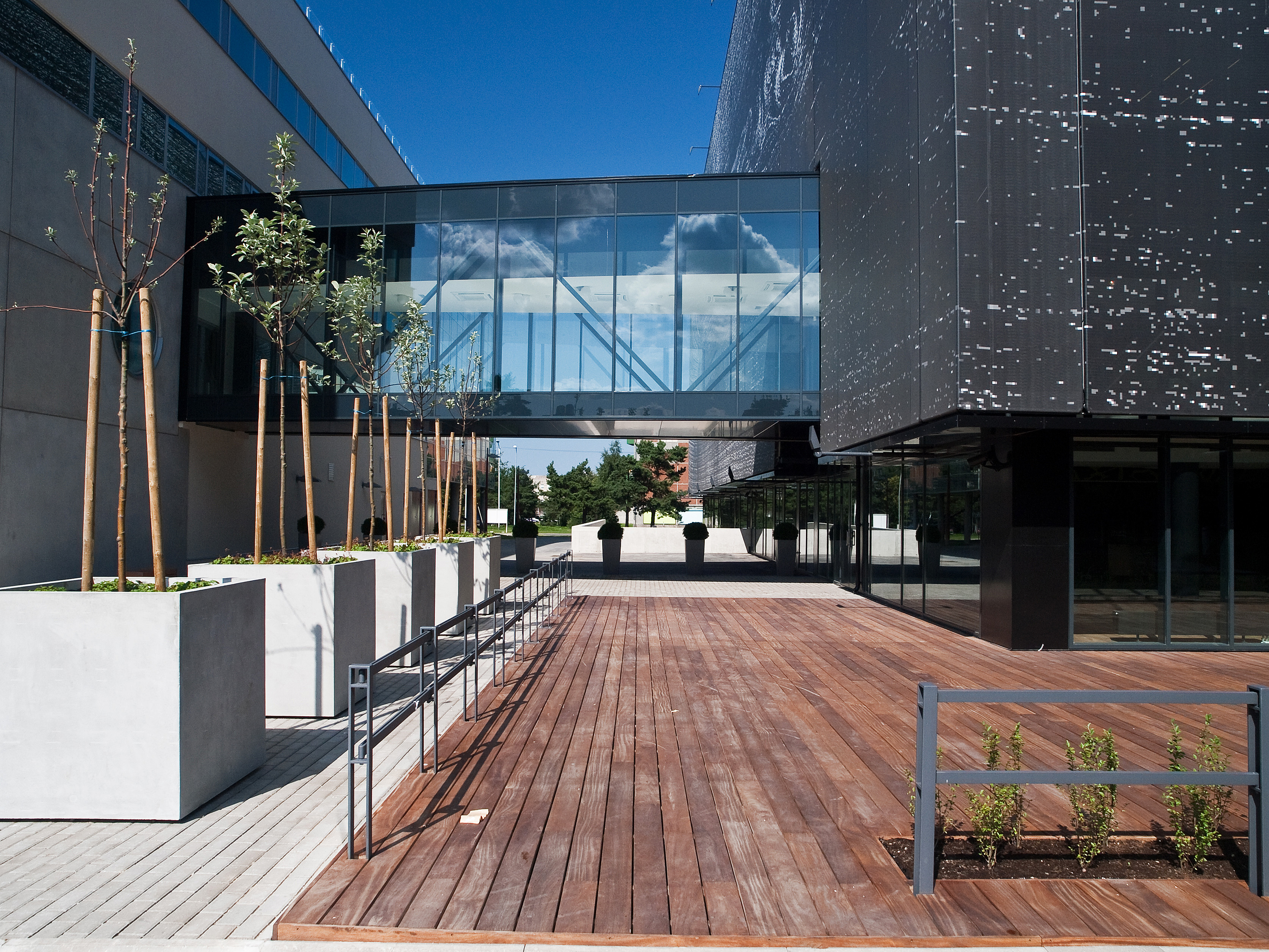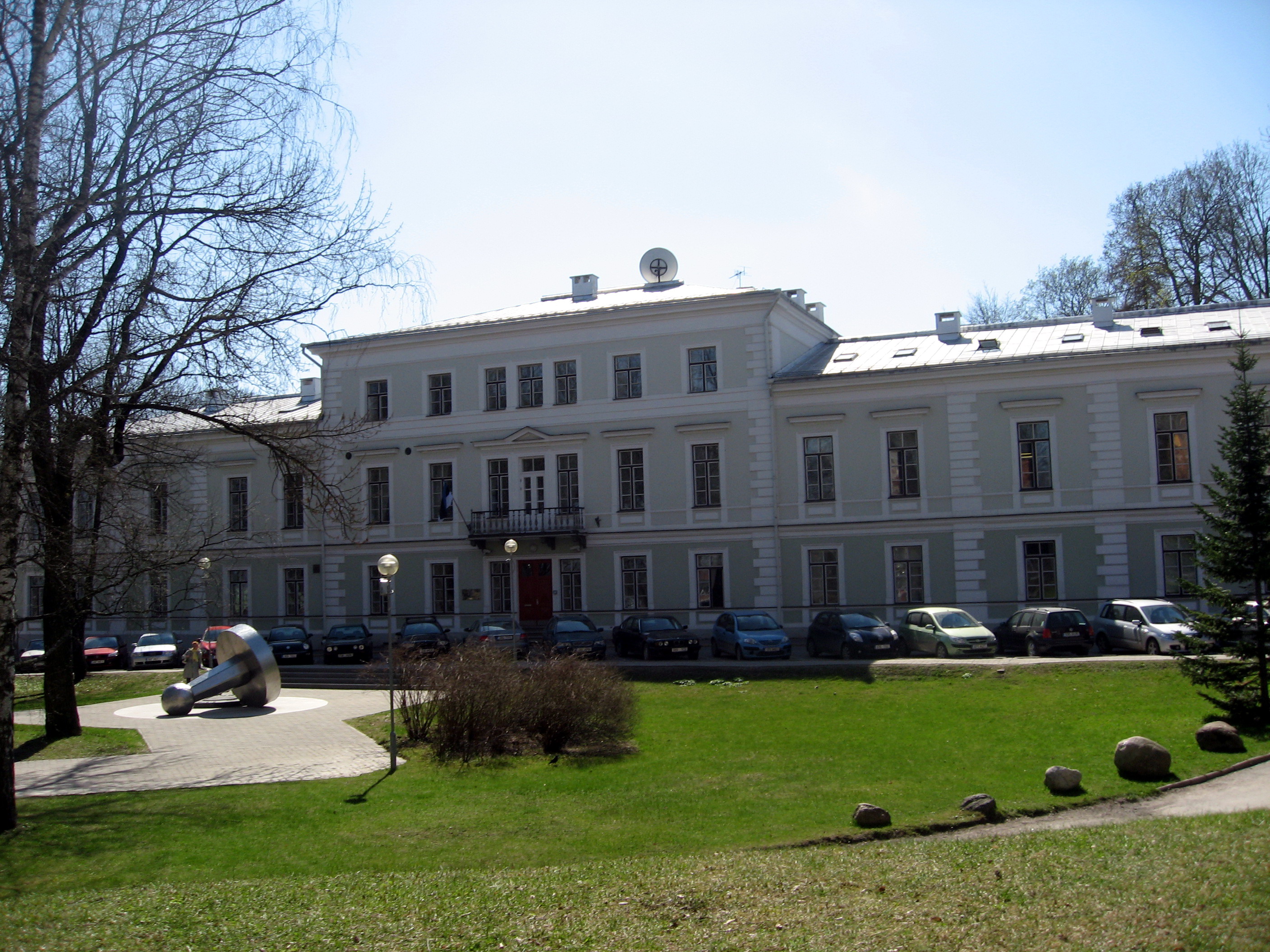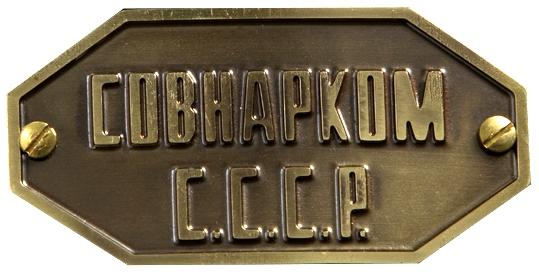|
Aino-Eevi Lukas
Aino-Eevi Lukas (29 July 1930 – 5 December 2019) was an Estonian equestrian, lawyer and politician. She competed for the national team in her youth in horse jumping and was the national champion in the obstacle course in 1947 and 1949. Earning a degree in law in 1968, she was recognized as the Estonian Lawyer of the Year in 2003. Post independence, she became the first chair of the Tartu City Council and in 2006, was knighted and the Tartu Medal was bestowed upon her. Early life and sport Aino-Eevi Lukas was born 29 July 1930 in Tallinn, Republic of Estonia to Martha-Katarina (née Mõttus) and Jaan Lukas. Her father was a career military officer who had taken part in the Estonian War of Independence and would later become a Major General and the Chief of Staff of the Estonian rifle corps. She attended Tallinn Secondary School No. 7, completing her education in 1948. During her schooling, in 1945, Lukas began riding horses, training under Evald Nõmme and Martin Sootsi. She ... [...More Info...] [...Related Items...] OR: [Wikipedia] [Google] [Baidu] |
Tallinn
Tallinn is the capital city, capital and List of cities in Estonia, most populous city of Estonia. Situated on a Tallinn Bay, bay in north Estonia, on the shore of the Gulf of Finland of the Baltic Sea, it has a population of (as of 2025) and administratively lies in the Harju County, Harju ''Counties of Estonia, maakond'' (county). Tallinn is the main governmental, financial, industrial, and cultural centre of Estonia. It is located northwest of the country's second largest city, Tartu, however, only south of Helsinki, Finland; it is also west of Saint Petersburg, Russia, north of Riga, Latvia, and east of Stockholm, Sweden. From the 13th century until the first half of the 20th century, Tallinn was known in most of the world by variants of its other historical Names of Tallinn in different languages, name Reval. “Reval” received Lübeck law, Lübeck city rights in 1248; however, the earliest evidence of human settlement in the area dates back nearly 5,000 years. The ... [...More Info...] [...Related Items...] OR: [Wikipedia] [Google] [Baidu] |
Siberia
Siberia ( ; , ) is an extensive geographical region comprising all of North Asia, from the Ural Mountains in the west to the Pacific Ocean in the east. It has formed a part of the sovereign territory of Russia and its predecessor states since the lengthy conquest of Siberia, which began with the fall of the Khanate of Sibir in 1582 and concluded with the annexation of Chukotka in 1778. Siberia is vast and sparsely populated, covering an area of over , but home to roughly a quarter of Russia's population. Novosibirsk, Krasnoyarsk, and Omsk are the largest cities in the area. Because Siberia is a geographic and historic concept and not a political entity, there is no single precise definition of its territorial borders. Traditionally, Siberia spans the entire expanse of land from the Ural Mountains to the Pacific Ocean, with the Ural River usually forming the southernmost portion of its western boundary, and includes most of the drainage basin of the Arctic Ocean. I ... [...More Info...] [...Related Items...] OR: [Wikipedia] [Google] [Baidu] |
1930 Births
Events January * January 15 – The Moon moves into its nearest point to Earth, called perigee, at the same time as its fullest phase of the Lunar Cycle. This is the closest moon distance at in recent history, and the next one will be on January 1, 2257, at . * January 26 – The Indian National Congress declares this date as Independence Day, or as the day for Purna Swaraj (Complete Independence). * January 28 – The first patent for a field-effect transistor is granted in the United States, to Julius Edgar Lilienfeld. * January 30 – Pavel Molchanov launches a radiosonde from Pavlovsk, Saint Petersburg, Slutsk in the Soviet Union. February * February 10 – The Việt Nam Quốc Dân Đảng launch the Yên Bái mutiny in the hope of ending French Indochina, French colonial rule in Vietnam. * February 18 – While studying photographs taken in January, Clyde Tombaugh confirms the existence of Pluto, a celestial body considered a planet until redefined as a dwarf planet ... [...More Info...] [...Related Items...] OR: [Wikipedia] [Google] [Baidu] |
Tallinn University Of Technology
Established in 1918, Tallinn University of Technology (TalTech; ) is the only Institute of technology, technical university in Estonia. TalTech, in the capital city of Tallinn, is a university for engineering, business, public administration and maritime affairs. TalTech has colleges in Tartu and Kohtla-Järve. Despite the similar names, Tallinn University and Tallinn University of Technology are separate institutions. History In the early twentieth century, Estonia recognised an urgent need for locally trained engineering specialists. Until then, young people from Estonia had received their specialist education in Saint Petersburg, St. Petersburg, Germany or Riga. Opportunities had to be sought for engineering-minded people to acquire an Estonian-based education which was adapted to local conditions and needs; Estonia was in the process of establishing itself as an independent country. On 17 September 1918, the Estonian Engineering Society opened an Estonian-based engineeri ... [...More Info...] [...Related Items...] OR: [Wikipedia] [Google] [Baidu] |
Õhtuleht
''Õhtuleht'' (''Evening Paper'') is the largest daily newspaper in Estonia. It is a tabloid newspaper. The newspaper is published in Tallinn in Estonian. History and profile ''Õhtuleht'' was established in 1944. On 3 July 2000 two rival tabloid papers in Estonia, ''Õhtuleht'' and '' Sõnumileht'' (''The Messenger''), merged, becoming ''SL Õhtuleht''. On 6 October 2008 the name was shortened back to ''Õhtuleht''. The paper has a liberal-conservative political stance. It is owned by Eesti Meedia, which also owns ''Postimees'' and which in turn is owned by Schibsted Schibsted ASA is an international media group. The company has its headquarters in Oslo, Norway Norway, officially the Kingdom of Norway, is a Nordic countries, Nordic country located on the Scandinavian Peninsula in Northern Europe. The ..., a Norwegian media group, and by Ekspress Grupp. ''Õhtuleht'' is available online at Ohtuleht.ee. Initially, at first the online version was just a copy of the ... [...More Info...] [...Related Items...] OR: [Wikipedia] [Google] [Baidu] |
Postimees
is an Estonian daily newspaper established on 5 June 1857, by Johann Voldemar Jannsen. In 1891, it became the first daily newspaper in Estonia. Its current editor-in-chief is Priit Hõbemägi. The paper has approximately 250 employees. ''Postimees'' is currently published five days a week and has the largest circulation and readership in Estonia with 55,000 copies sold during the workweek and over 72,000 on weekends. Ninety-seven per cent of the paper's circulation is subscription-based with only three per cent sold individually. The weekend edition of ''Postimees'', published on Saturdays, includes several separate sections: ''AK'' (), ''Arter'', and a television-guide. The paper is owned by namesake media company Postimees Group (formerly known as Eesti Meedia), which a company owned by entrepreneur Margus Linnamäe has a full control since 2015. History ''Postimees'' is considered to be the oldest newspaper in Estonia. ''Perno Postimees ehk Näddalaleht'' (now '' ... [...More Info...] [...Related Items...] OR: [Wikipedia] [Google] [Baidu] |
European Court Of Justice
The European Court of Justice (ECJ), officially the Court of Justice (), is the supreme court of the European Union in matters of European Union law. As a part of the Court of Justice of the European Union, it is tasked with interpreting EU law and ensuring its uniform application across all EU member states under Article 263 of the Treaty of the Functioning of the European Union (TFEU). The Court was established in 1952, and is based in Luxembourg. It is composed of one judge per Member State – currently – although it normally hears cases in panels of three, five or fifteen judges. The Court has been led by president Koen Lenaerts since 2015. The ECJ is the highest court of the European Union in matters of Union law, but not national law. It is not possible to appeal against the decisions of national courts in the ECJ, but rather national courts refer questions of EU law to the ECJ. However, it is ultimately for the national court to apply the resulting interpre ... [...More Info...] [...Related Items...] OR: [Wikipedia] [Google] [Baidu] |
Uno Lõhmus
Uno Lõhmus (30 October 1952 – 7 August 2024) was an Estonian judge, Chief Justice of the Supreme Court of Estonia from 1998 to 2004. Life and career Lõhmus was born in Mõisaküla on 30 October 1952. From 1994 to 1998 he was the Judge elected in respect of Estonia to the European Court of Human Rights. He then served at the Court of Justice of the European Union as the first Estonian Judge until 2013. In 2005 he was awarded the Order of the White Star The Order of the White Star (; ) was instituted in 1936. The Order of the White Star is bestowed on Estonian citizens and foreigners to give recognition for services rendered to the Estonian state. Design Classes The Order of the White Star ..., II class. Lõhmus died on 7 August 2024, at the age of 71. ... [...More Info...] [...Related Items...] OR: [Wikipedia] [Google] [Baidu] |
Ago Pajur
Ago Pajur (born 24 March 1962 in Türi) is an Estonian historian. His principal fields of interest include the political history of Estonia in the first half of the 20th century, and the military history of Estonia in the 20th century. In 1999, he defended his doctoral thesis at the University of Tartu. Since 1991, he has taught the history of Estonia at Tartu University. In 2020, he was awarded the Order of the White Star, Fifth Class. References Living people 1962 births 20th-century Estonian historians University of Tartu alumni Academic staff of the University of Tartu Recipients of the Order of the White Star, 5th Class People from Türi 21st-century Estonian historians {{Estonia-bio-stub ... [...More Info...] [...Related Items...] OR: [Wikipedia] [Google] [Baidu] |
Supreme Court Of Estonia
The Supreme Court of Estonia () is the court of last resort in Estonia. It is both a court of cassation and a constitutional court. The courthouse is in Tartu. History During the first independence period (1919-1940) With the First Constitution of Estonia and the Supreme Court Act, the Estonian Constituent Assembly established the Supreme Court of Estonia as a court of cassation on 21 October 1919. The first Justices of the Court were Kaarel Parts (Chief Justice), Paul Beniko, Rein Koemets, Jaan Lõo, Hugo Reiman, Martin Taevere and Peeter Puusepp. The Court first sat in Tartu Town Hall on 14 January 1920. During the centralisation of power in 1935, the Supreme Court was transferred to Tallinn, operating from a specially remodelled building on Wismari Street. When the Court last sat on 31 December 1940, it accepted an order by the government of the Estonian SSR to disband itself as of 1 January 1941. Soviet occupation (1940-1991) The Supreme Court of the Estonian SSR ( ... [...More Info...] [...Related Items...] OR: [Wikipedia] [Google] [Baidu] |
Estonian Sovereignty Declaration
The Estonian Sovereignty Declaration (), fully: Declaration on the Sovereignty of the Estonian SSR (), was issued on 16 November 1988 during the Singing Revolution in the Estonian SSR. The declaration asserted Estonia's sovereignty and the supremacy of the Estonian laws over the laws of the Soviet Union. Estonia's newly elected parliament also laid claim to all natural resources: land, inland waters, forests, mineral deposits and to the means of industrial production, agriculture, construction, state banks, transportation, municipal services, etc. within Estonia's borders. Background Estonia gained independence in 1918, in the aftermath of World War I. During World War II, on 16-17 June 1940, Estonia was invaded and occupied by the Soviet army, and its territory was subsequently annexed by the Stalinist Soviet Union in August 1940. The majority of Western nations refused to recognize the incorporation of Estonia ''de jure'' by the Soviet Union and only recognized the governme ... [...More Info...] [...Related Items...] OR: [Wikipedia] [Google] [Baidu] |
Government Of The Soviet Union
The Government of the Union of Soviet Socialist Republics (USSR) was the executive and administrative organ of the highest organ of state power, highest body of state authority, the Supreme Soviet of the Soviet Union, All-Union Supreme Soviet. It was formed on 30 December 1922 and abolished on 26 December 1991. The government was headed by a chairman, most commonly referred to as the premier of the Soviet Union, and several Deputy Premier of the Soviet Union, deputy chairmen throughout its existence. The Communist Party of the Soviet Union (CPSU), as "Leading role of the party, The leading and guiding force of Soviet society and the nucleus of its political system" per Article 6 of the 1977 Constitution of the Soviet Union, state constitution, controlled the government by holding a two-thirds majority in the All-Union Supreme Soviet. The government underwent several name changes throughout its history, and was known as the Council of People's Commissars of the Soviet Union, Council ... [...More Info...] [...Related Items...] OR: [Wikipedia] [Google] [Baidu] |






